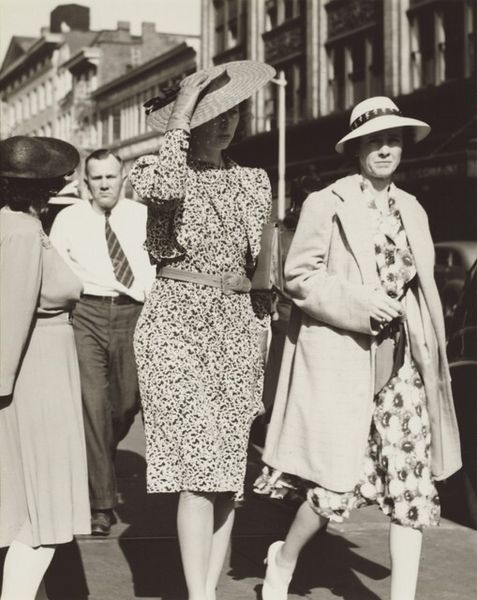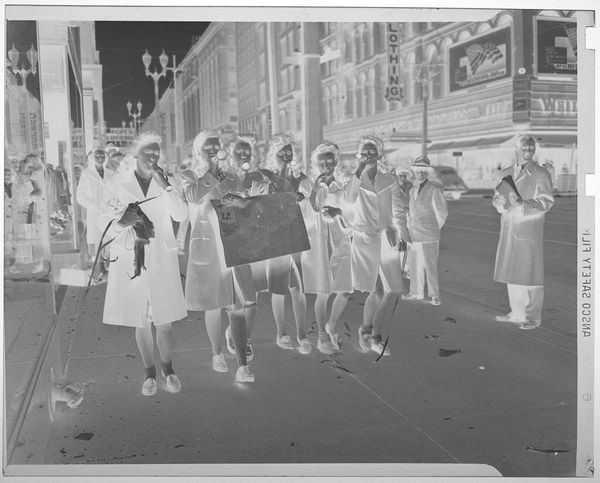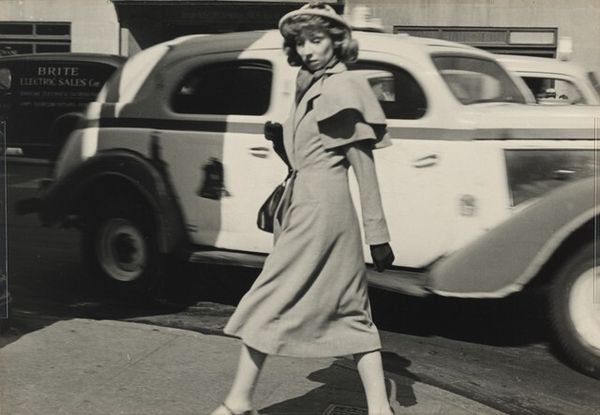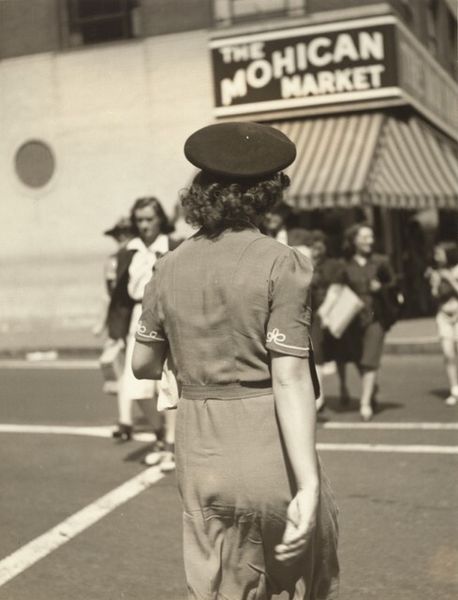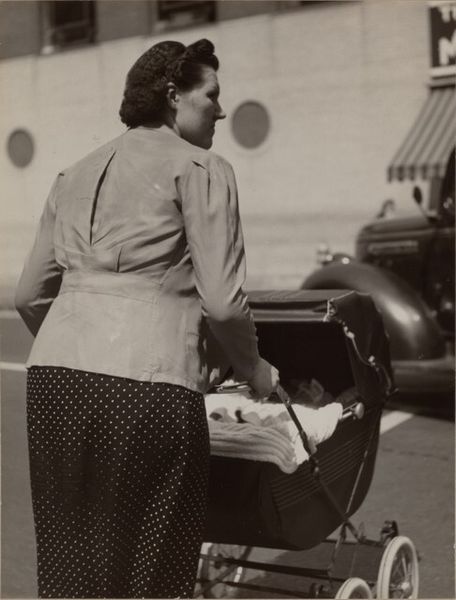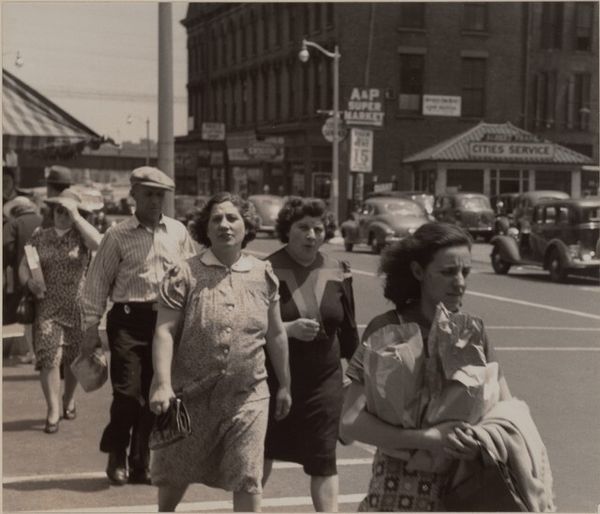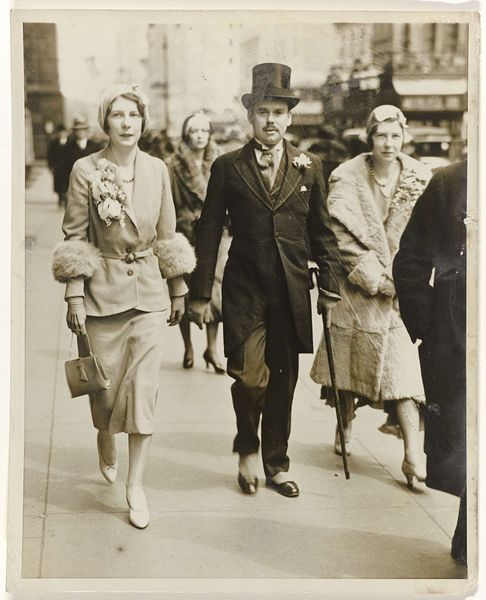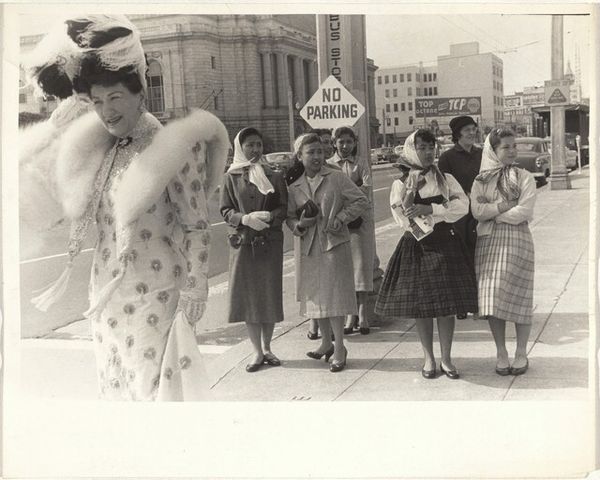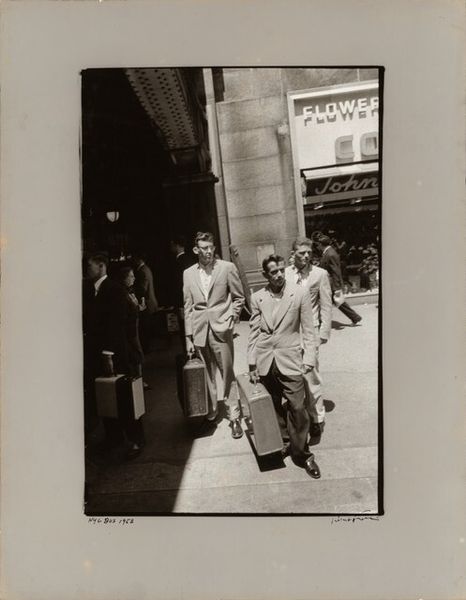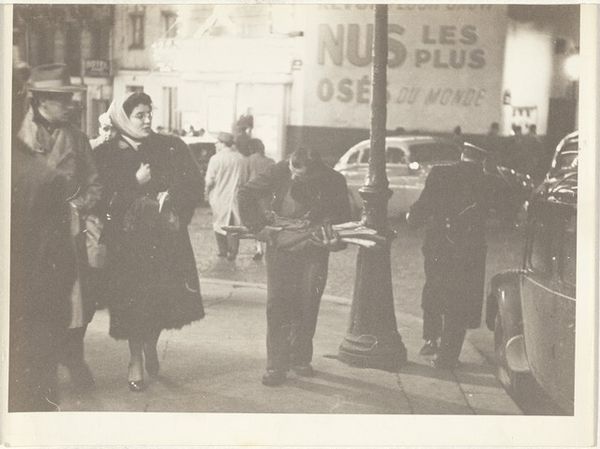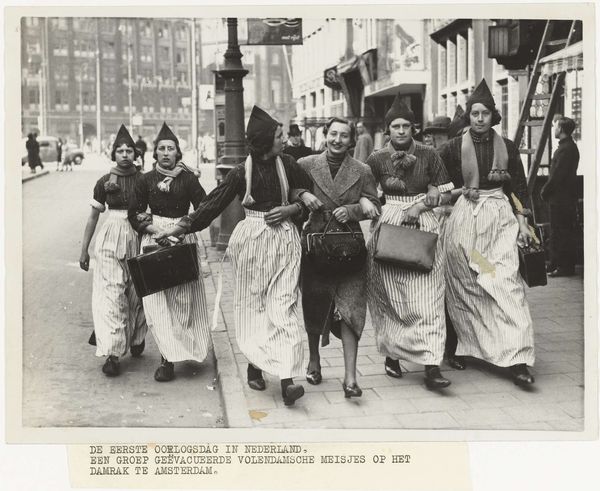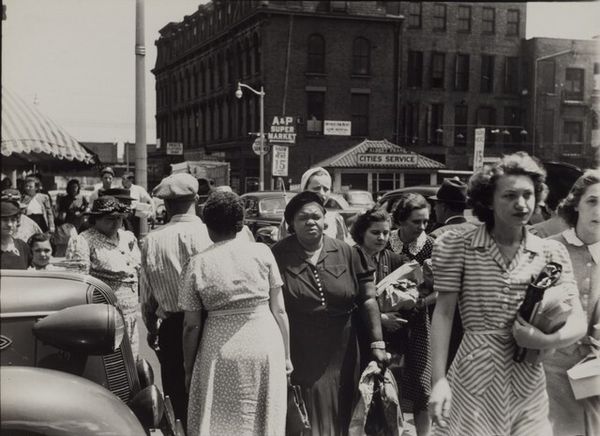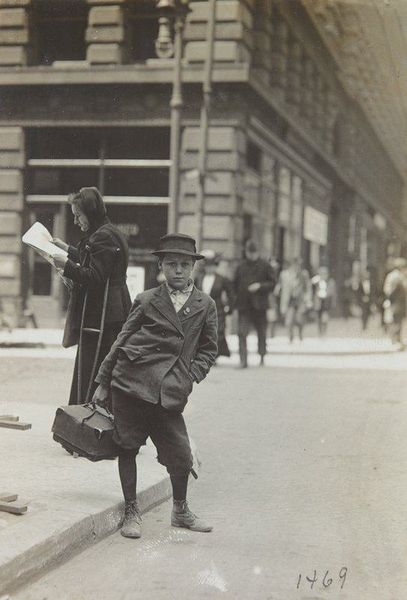
photography, gelatin-silver-print
#
portrait
#
landscape
#
outdoor photograph
#
street-photography
#
photography
#
historical photography
#
gelatin-silver-print
#
ashcan-school
#
cityscape
#
modernism
#
realism
Dimensions: image: 23.1 × 17.4 cm (9 1/8 × 6 7/8 in.) sheet: 25.1 × 20.2 cm (9 7/8 × 7 15/16 in.)
Copyright: National Gallery of Art: CC0 1.0
Editor: Here we have Walker Evans’s gelatin-silver print, "Bridgeport, Connecticut," from 1941. The photo captures women crossing a street, and I’m immediately struck by the contrast between the figures in the foreground and the buildings behind. How would you interpret this work? Curator: Precisely, observe the meticulous composition: Evans situates the figures strategically. Notice how the street markings act as horizontal lines, framing their movement. Furthermore, the stark grayscale and high contrast of the gelatin silver print highlights texture and form, rendering a detailed view that simultaneously conveys grit and grace. Editor: So you're saying the way Evans structured the shot, the contrast of the print, that creates a significant part of the photograph’s meaning? Curator: Absolutely. Consider the interplay between light and shadow. The strong directional light defines shapes, carving out details. Evans uses this light to bring form and depth, but also calls your eye to the ephemeral shadow cast upon the asphalt. The placement is not accidental; it speaks to the relationship between the figures and their environment. What might Evans be implying here? Editor: Perhaps a comment on fleeting moments or maybe the relationship between people and urban spaces? Curator: An insightful suggestion! Let us not dismiss the potential interplay of textures evident in the print itself. What part of the print commands your focus? Editor: Now that you mention texture, my eye is drawn to the woman’s dress and the details of the brick buildings behind. Curator: Precisely. Observe how Evans employs varying textures in the woman's dress, each meticulously rendered in the grayscale. It evokes both the era and a visual echo of the buildings. Thus, do the surfaces serve as indices or mere visual features? Editor: I see. It is less about what the subject is but more about how Evans portrays the formal components: line, light, and texture, that evokes that sense of place. Thank you. Curator: A fitting observation; my pleasure.
Comments
No comments
Be the first to comment and join the conversation on the ultimate creative platform.
